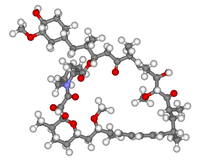
How Might Bromodomain and Extra-Terminal (BET) Inhibitors Operate in Cardiovascular Disease?
Sign Up to like & getrecommendations! Published in 2019 at "American Journal of Cardiovascular Drugs"
DOI: 10.1007/s40256-018-00315-3
Abstract: Bromodomain and extra-terminal (BET) inhibitors, acting via epigenetic mechanisms, have been developed recently as potential new treatments for cancer, including prostate cancer, and inflammatory conditions. Some BET inhibitors, such as RVX-208, also raise high-density lipoprotein… read more here.
Keywords: disease; bromodomain extra; rvx 208; cardiovascular disease ... See more keywords

Progress in the development of domain selective inhibitors of the bromo and extra terminal domain family (BET) proteins.
Sign Up to like & getrecommendations! Published in 2021 at "European journal of medicinal chemistry"
DOI: 10.1016/j.ejmech.2021.113853
Abstract: Dysfunction of the bromo and extra terminal domain (BET) family proteins is associated with many human diseases, therefore the BET family proteins have been considered as promising targets for drug development. Numerous small molecular compounds… read more here.
Keywords: extra terminal; bromo extra; family; domain ... See more keywords

A monocyte-keratinocyte-derived co-culture assay accurately identifies efficacies of BET inhibitors as therapeutic candidates for psoriasiform dermatitis.
Sign Up to like & getrecommendations! Published in 2020 at "Journal of dermatological science"
DOI: 10.1016/j.jdermsci.2020.08.005
Abstract: BACKGROUND Bromodomain and extra-terminal (BET) proteins perform key roles in epigenetic control of gene expression that is involved in inflammatory conditions, including psoriasiform dermatitis (PsD). Predicting which (of many potential available BET inhibitors) will be… read more here.
Keywords: psoriasiform dermatitis; bet; bet inhibitors; monocyte keratinocyte ... See more keywords

Targeting Bromodomain-Selective Inhibitors of BET Proteins in Drug Discovery and Development.
Sign Up to like & getrecommendations! Published in 2022 at "Journal of medicinal chemistry"
DOI: 10.1021/acs.jmedchem.1c01835
Abstract: Blocking the interactions between bromodomain and extraterminal (BET) proteins and acetylated lysines of histones by small molecules has important implications for the treatment of cancers and other diseases. Many pan-BET inhibitors have shown satisfactory results… read more here.
Keywords: bet; development; selective inhibitors; bromodomain ... See more keywords

Structure-Based Discovery and Optimization of Furo[3,2-c]pyridin-4(5H)-one Derivatives as Potent and Second Bromodomain (BD2)-Selective Bromo and Extra Terminal Domain (BET) Inhibitors.
Sign Up to like & getrecommendations! Published in 2022 at "Journal of medicinal chemistry"
DOI: 10.1021/acs.jmedchem.2c00100
Abstract: Pan-bromodomain and extra terminal (Pan-BET) inhibitors show profound efficacy but exhibit pharmacology-driven toxicities in clinical trials. The development of domain-selective BET inhibitors to separate efficacy and toxicity is urgently needed. Herein, we report a series… read more here.
Keywords: furo pyridin; extra terminal; bd2; bet inhibitors ... See more keywords

Development of BET Inhibitors as Potential Treatments for Cancer: Optimization of Pharmacokinetic Properties.
Sign Up to like & getrecommendations! Published in 2022 at "ACS medicinal chemistry letters"
DOI: 10.1021/acsmedchemlett.2c00219
Abstract: We describe the synthesis of triazole-containing carboline derivatives and their utility as bromodomain and extra-terminal (BET) inhibitors. A convergent synthetic route permitted the detailed investigation of deuteration and fluorination strategies to reduce clearance while maintaining… read more here.
Keywords: bet; potential treatments; inhibitors potential; bet inhibitors ... See more keywords

AI identifies distinct subgroups of HFpEF
Sign Up to like & getrecommendations! Published in 2021 at "Nature Reviews Cardiology"
DOI: 10.1038/s41569-021-00545-0
Abstract: volume 18 | JuNe 2021 | 387 Furthermore, in a mouse model of SARS-CoV-2 infection, treatment with a BET inhibitor decreased the transcription of genes related to the viral response. “Using a number of omic-based… read more here.
Keywords: distinct subgroups; dysfunction; bet; identifies distinct ... See more keywords

BET inhibitors: a novel epigenetic approach
Sign Up to like & getrecommendations! Published in 2017 at "Annals of Oncology"
DOI: 10.1093/annonc/mdx157
Abstract: Epigenetics has been defined as 'the structural adaptation of chromosomal regions so as to register, signal or perpetuate altered activity states.' Currently, several classes of anticancer drugs function at the epigenetic level, including inhibitors of… read more here.
Keywords: bet proteins; inhibitors novel; approach; epigenetic approach ... See more keywords

Establishment and Evaluation of Dual HDAC/BET Inhibitors as Therapeutic Options for Germ Cell Tumors and Other Urological Malignancies
Sign Up to like & getrecommendations! Published in 2022 at "Molecular Cancer Therapeutics"
DOI: 10.1158/1535-7163.mct-22-0207
Abstract: Abstract Urological malignancies represent major challenges for clinicians, with annually rising incidences. In addition, cisplatin treatment induced long-term toxicities and the development of therapy resistance emphasize the need for novel therapeutics. In this study, we… read more here.
Keywords: cell; urological malignancies; bet inhibitors; hdac bet ... See more keywords

SAT-330 Preclinical Screen of Patient CRPC Tumors Shows Sensitivity to Bromodomain Inhibitors Includes AR-null and Neuroendocrine Disease
Sign Up to like & getrecommendations! Published in 2019 at "Journal of the Endocrine Society"
DOI: 10.1210/js.2019-sat-330
Abstract: Abstract Castration-resistant prostate cancer (CRPC) remains a lethal disease despite the introduction of second generation androgen receptor (AR) directed therapies. Resistance to AR directed therapies, such as abiraterone and enzalutamide, emerges through diverse alterations in… read more here.
Keywords: patient; directed therapies; bet inhibitors; null neuroendocrine ... See more keywords